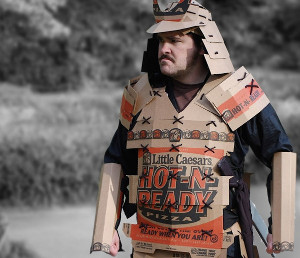Last edited: Sep 10, 2014, 3:00pm -0600
What Do Pizza Boxes Have To Do With Tutoring?
This article was originally posted on Cranium Cafe’s blog.
Despite what you may have heard, the dream of the 90s was teleportation1. Human teleportation is a quintessential part of the imagined future, like flying cars or jetpacks. Being able to immediately and cheaply teleport yourself and others long distances seems like some sort of utopian dream. I could spend all day talking about all sorts of consequences (the philosophical ones alone are enormous!), but I want to briefly mention an economic one.
If teleportation is immediately and readily available to all, why have a Starbucks on every corner? Why not consolidate all the McDonald’s into one Mega McDonald’s? Large corporations wouldn’t need to buy all that land in expensive places like populated cities. Target could buy some incredibly cheap land out in the desert somewhere, build one Super Super Target and be done. Instead of Walmart Supercenters there’d be a Walmart Ultracenter, or just one big Borders Books, or one huge Blockbuster.
Except, wait… Borders and Blockbuster are already gone and we don’t have teleportation yet. Even malls in general are on their way out. What happened?
It turns out there are two ways to use teleportation and one is enormously easier. You can teleport yourself to experience other things elsewhere, or you can teleport those things and experiences back to where you are. In the before time, people used to go to stores to shop and purchase things; now they transmit the shopping experience to their home computer and have their products delivered overnight. Why have malls? Maybe you’ve heard of Borders and Blockbusters’ new names? Amazon and Netflix? We aren’t teleporting ourselves to the store, we’re teleporting the store to us.
Even without actual teleportation, things are getting more instantaneous every day. Thanks to the power of The Internet, you can instantaneously deliver all the digital books to your eReader and all the movies the MPAA currently allows to your TV in exactly no-seconds flat. There’s a reason Jeff Bezos named his digital distribution devices the Kindle and the Fire. He’s setting fire to the idea that you have to be in a particular library with a particular stack of pages to read the combined works of the world.
In the wonderful 2011 science fiction book Ready Player One, the classroom has moved online. Students are free to get education from the teachers they need on the topics they require, without worrying about pesky little annoyances like where they are physically; home school and normal school are just a virtual reality headset and glove pair away. Field trips can take you anywhere. With a more advanced VR suit, you can literally run through entirely new worlds, feeling the breeze in your hair and the humidity on your skin. Legitimacy of such an experience aside, there are some amazing things coming up in our future. Just think of what this means as far as opportunities for educators and education!
The future is already here in some sense. Palmer Luckey, founder of Occulus VR, is a big fan of Ready Player One, and requests that all of his employees read it. Why? Because Palmer Luckey’s company is building the VR headsets that the Ready Player One science fiction universe so clearly describe. Sony and Samsung are making similar headsets. Google has print out instructions to turn your phone and a pizza box into a VR headset, for Pete’s sake!
Of course, wearing some pizza box on your head doesn’t make virtual tutoring any easier, unless you want your students to see you with a pizza box on your head (I do). Either way, that’s just a technology problem to solve, too. Suffice it to say, technology is rapidly advancing to the point where very soon, everything will be new and exciting and different, maybe even surprisingly so.
As educators, we should be constantly looking to see where the winds of technology are blowing and how we can harness these new tools to help students learn more effectively than ever before. Online tutoring and teaching can become surprisingly more engaging when you have the full world of experiences at your disposal to bring to each student. Twenty years ago, if you lived on a farm in Nebraska and you wanted a world-class Computer Science education but couldn’t travel, good luck! Today, you can participate in a MOOC and read everything there is to read and even watch some noninteractive lectures – you might even get a certificate for completing some classes. Tomorrow? Who knows!
It’s not teleportation (yet!), but what Cranium Cafe does is just the beginning of something that could arguably be even better.
1 At least for me, if not Carrie Brownstein and Fred Armisen.
